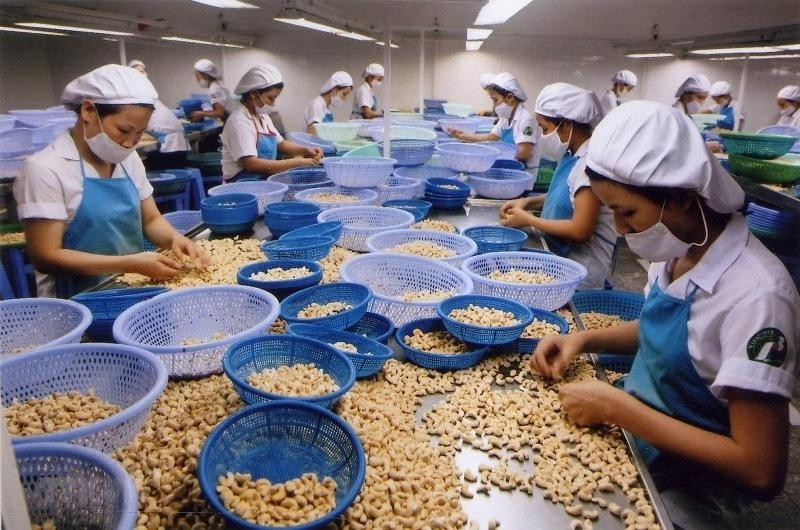Cashew export faces many difficulties and challenges
According to data from the General Department of Customs, Vietnam’s cashew exports in July 2022 decreased by 3.2% in volume and by 8.7% in value, compared to June 2022. The exports in July 2022 also fell by 17.5% in volume and 26.1% in value, compared to the same period last year. During the first seven months of 2022, cashew nut exports reached 294,000 tonnes, worth 1.76 billion USD, down 10.5% in volume and 12.1% in value over the same period in 2021.
The effects of the prolonged COVID-19 pandemic resulted in increasing freight costs and delays in the shipment of orders that were signed in 2021.
Although the average export price was about 5,792 USD per tonne, up 1.45% over the same period in 2021, the price of raw cashew imports from Africa from the beginning of this crop has seen a 15- 20% year-on-year increase. The increase in export prices has not yet caught up with the increase in import prices for raw materials, slowing down the buying of raw materials.
According to the latest information from the General Department of Customs, the country imported nearly 1.26 million tonnes of cashew nuts from the beginning of this year to July 15, with a turnover of nearly 1.84 billion USD, down 670,000 tonnes in volume or 34.82% and down 37% in value over the same period last year.
High inflation in many major global economies causes people to tighten spending, especially for high-priced products. Vietnam’s cashew nut exports are forecast to still face difficulties in the remaining months of 2022.
Despite adverse factors, the Import-Export Department said that the global cashew nut market is anticipated to grow by an average of 4.6% in the 2022-2027 period. Global trends are favouring vegan and plant-based diets in addition to alternative protein sources, leading to increasing demand for nuts and nut-based foods.
Enhancing product value and increasing market share
In South America, the consumption of cashews in the consumer’s diet has remained stable. In Asia, cashews are used as the main ingredient to prepare various sweet and savoury dishes. China leads the region in importing cashew nuts. Nuts have been a major ingredient in the Chinese diet since the introduction of the National Health Policy called “Dietary Guidelines for the Chinese People”, which emphasises the daily consumption of nuts.
In Europe, due to the increasing health consciousness of consumers, cashew nut consumption is rising. Cashews have also been used more as an ingredient in dishes and snacks.
France is the third largest cashew nut import market in the European Union (EU). Despite advantages thanks to the EVFTA deal, the Vietnamese cashew industry has yet to utilisethis market well. According to the International Trade Centre (ITC), Vietnam’s cashew nut market share in the total import value of France decreased from 64.95% in the first five months of 2021 to 63.68% in the first five months of 2022.
According to the Vietnamese Trade Counselor in France, the competitiveness of Vietnamese cashew nuts in this market is not high. There are no Vietnamese-branded cashew products in French supermarkets and hypermarkets, as most Vietnamese businesses only focus on wholesale and have not paid attention to brand development.
To improve product value and increase the market share of Vietnamese cashews in France, the EVFTA agreement is a good tool to enjoy preferential tariffs. Meeting EU and French regulations are important as the EU and French food-related legal systems are quite complex, with separate regulations on mycotoxins, pesticide residues, heavy metal content, and microbiological contaminants. Before bringing goods to the French market, businesses should seek a lawyer’s counsel to get assistance in updating the latest information, building contracts and implementing transaction processes to avoid risks.
Chairman of the Vietnam Cashew Association, Pham Van Cong emphasises that besides focusing on improving the quality of raw materials and cashew products, the cashew industry needs to promote exports to several key markets, especially markets that have signed Free Trade Agreements with Vietnam to make the most of import tax incentives.
















